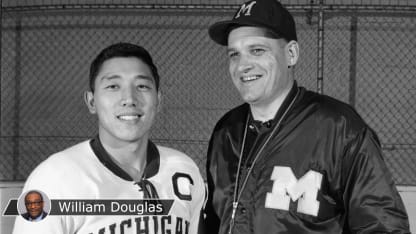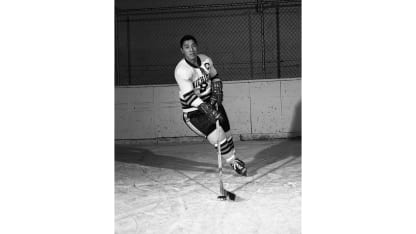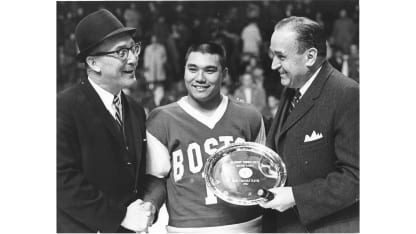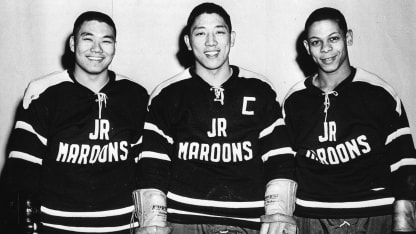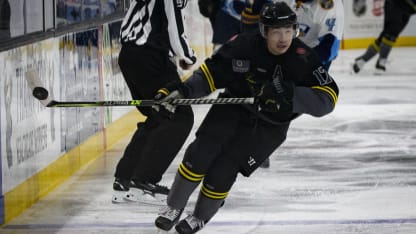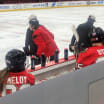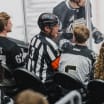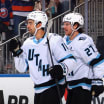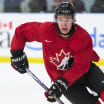Wakabayashi said the appeal of playing in his parents' homeland and the prospect of influencing Japanese players as a coach once his playing days were done was too strong.
But he quickly learned changing continents and cultures wasn't easy.
"People would speak to me in Japanese automatically and I didn't know any Japanese, maybe a couple words like 'thank you' and 'bye-bye,'" he said. "It was a culture shock, but I enjoyed first stepping off the plane. It was an amazing experience because everybody was Japanese, they looked like me."
He played 11 seasons in the six-team Japan Hockey League, regularly finishing among its top scorers, and became a player-coach with Kokudo of the NHL in 1972-73, a year after his brother joined him in Japan.
Herb Wakabayashi represented Japan in the 1972 Sapporo Olympics, 1976 Innsbruck Olympics and was Japan's opening ceremony flag bearer at the 1980 Lake Placid Olympics. He died on June 2, 2015, at 70.
Mel Wakabayashi said coaching Japan's national hockey team in 1980 was the capstone of his career.
"That walk into the Olympic stadium, opening ceremony, had to be the finest moment of my life," he said. "My parents were there, and you're on world television."
Wakabayashi said he's proud of his hockey accomplishments and pleased if he's created a trail for Japanese players to follow.
